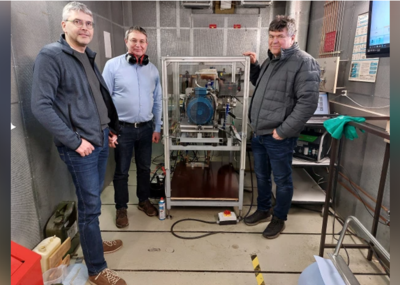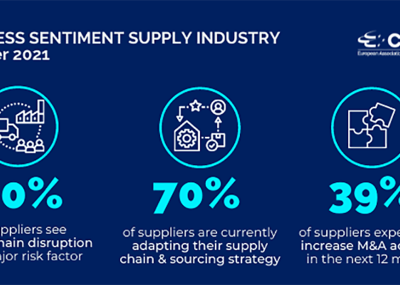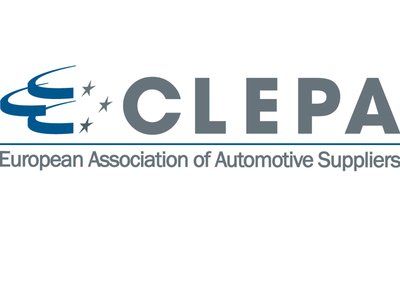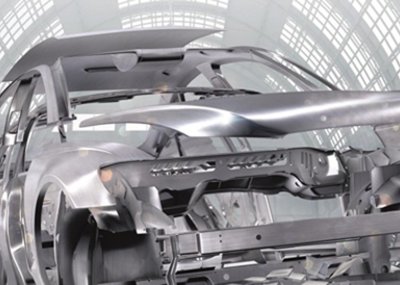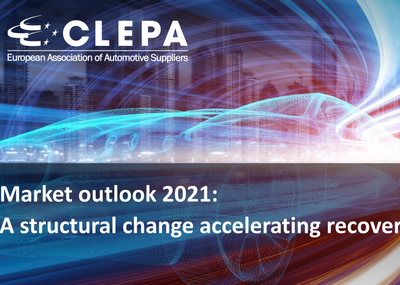In the slipstream of headlines like ‘EU mulls death penalty for combustion engine’, Brussels starts eying a social framework to ensure that ‘nobody is left behind’. But why should it take such drastic sentence to become serious about managing change in a socially acceptable way?
The European Commission is expected to announce new CO2 limits for vehicles on 14 July as part of its "Fit for 55" package, aimed at putting the EU firmly on track towards climate neutrality by 2050. Rumours are that one of the scenarios currently discussed by the Commission leadership is a CO2 emission reduction for new cars of 60% by 2030 (up from the 37.5% agreed only in 2019) and by 100% in 2035: hence the comparison to a 'death penalty'.
As CLEPA said in a statement, such stringent measures would—unless there is a role for renewable fuels acknowledged in the CO2 law—indeed be a de facto ban on combustion engine technology. It leaves vehicle manufacturers no other choice than going electric, or face huge fines.
For consumers and businesses, this means that, if they need a new vehicle in 2036, there won’t be a choice. The car will have an electric engine, regardless of whether it fits mobility needs, is affordable, or whether there is the green energy and the infrastructure to charge it or not.
That is a lot of ‘ifs’.
Automotive suppliers are not the only ones scratching their heads about the consequences. If recent public appearances are indicative, Green Deal Commissioner Timmermans is worried about the impact on those that rely on affordable mobility to commute, or to make a living as a retailer or small workshop. Other Commissioners have questions too. How to compensate for rising fuel and energy prices? How to keep mobility inclusive and accessible for all? How to avoid greater divergences between EU countries in the west and the east, and between more and less affluent regions within Member states?
"Close to 1 million people have a job directly linked to the production of vehicle powertrain technology"
The impact on workers in the automotive sector will be significant as well. Trade union umbrella organisation IndustriAll has good reason to argue for a social transition framework. The coal transition, generally recognised as dramatic, affects 0.015% of European jobs, according to the trade unions institute ETUI. Automotive employment amounts to 6%. Of the 3.9 million directly employed by vehicle manufacturers and suppliers, close to 1 million people have a job directly linked to the production of vehicle powertrain technology. The total number of employees requiring re- and upskilling is even higher, because of the parallel transformation towards smart mobility (connected and automated driving) and the increasing automation of the production. The magnitude of the challenge ahead only seems to be dawning.
To inform the discussion, CLEPA will launch the Automotive Employment Footprint Portal next week: an online repository of data on automotive employment and manufacturing, revealing both risks and opportunities. A successful transition starts with knowing the stakes. Watch your inboxes and our social media channels!
The portal gives access to over a dozen of recent studies from independent research bodies, offering insights into how the uptake of electric and electrified vehicles correlates with the impact on the workforce. A spotlight on key regions showcases how the automotive industry is contributing to local economies, as vehicle manufacturers and suppliers typically form strong regional clusters in the production of vehicles and key components.
The pace with which battery electric vehicles win market share correlates directly to the number of jobs at risk, and to when this risk materialises. The percentage of electrified vehicles, i.e. hybrids and plug-in hybrids, also makes a notable difference. The Commission’s impact assessment for the current targets assumed a large share of hybrid vehicles underpinning its ‘net job gains’ conclusion. This scenario won’t stand on the tail of steeper targets.
A deep-dive under the ‘net’ employment impact numbers reveals that many livelihoods will be impacted dramatically. The move towards electrification will lead to a decrease in jobs linked to the production of conventional powertrains and to a greater demand for engineers with software and digital skills. The new drivetrains also require skills not yet available in the labour market. ‘Old’ and ‘new’ jobs are in many cases not easily interchangeable, require different skills, or can be located entirely elsewhere.
This does not mean the change should not happen. On the contrary: the climate ambitions are clear and shared. But automotive suppliers argue that society needs both pace and breathing space to manage this monumental transformation. With stringent targets under consideration, so must all of the options to achieve them, linking technology solutions and energy carriers in the most efficient way. To ‘leave no-one behind’, as the Commission declares in the Green Deal. And to make use of our industrial strengths.
"Technology neutrality is a long-standing principle in EU law. It supports innovation, competition, choice and lower prices for citizens and businesses"
It is encouraging to see some members of the European Parliament reaffirming the case for technology neutrality and openness in the debate on future mobility and climate policies. Technology neutrality is a long-standing principle in EU law. It supports innovation, competition, choice and lower prices for citizens and businesses. It does not assume any hermetic knowledge of the future. It keeps options open to adjust to new developments, be they technology breakthroughs, geopolitical events, or the availability of resources. The principle of technology neutrality has served well and should not be given up.
Other regions in the world are also reviewing how to make the transition work without causing unnecessary upheaval. CARB, the California Air Resources Board, is now looking to include a 20% quota for plug-in hybrids (PHEV) in their CO2 mandate beyond 2035. Hybrids with a minimum electric range of 50 miles (around 80 km) would be eligible. The move is based on experience with scrapping schemes showing that low- and moderate-income households (for a 4-person household this equates to roughly $100.000 annual income in CA) have a strong preference for PHEV. This underscores the relevance of hybrid solutions for the acceptance of electromobility in the wider population – even in an affluent region such as California.
In China, by 2035, ‘new energy vehicles’ are targeted to account for more than 50% of the new sales. By then, energy-saving vehicles must have fully realised hybridisation, so the strategy. Hybrid power is considered an effective energy-saving vehicle technology and pure electric and energy-saving vehicles should be developed simultaneously.
"Not all electric vehicles run on green energy. Not all combustion engines need to run on fossil fuel"
And then there is the defossilisation of fuels. Not all electric vehicles run on green energy. Not all combustion engines need to run on fossil fuel. Vehicles are (only then) climate neutral if they are charged with green energy or fuelled with sustainable renewable fuels. Policy makers, industry, infrastructure providers and mobility users must work to ensure that only green energy fuels our mobility as soon as possible.
Where electric mobility is the best and most economical solution, it will succeed. And we see a lot happening there. The business case is growing, especially where there are incentives and charging points in place. But where it is not, there should be choice.
In Europe, this requires ambitious CO2 targets that take ‘well-to-wheel’ emissions into account via a crediting scheme for climate-neutral fuels, combined with ambitious targets in the renewable energy rules, including sub targets for hydrogen and sustainable fuels, and a revision of the energy taxation directive to remove inconsistencies. This is achievable in the current regulatory framework, where it is not too complex and does not need a major overhaul. In this way, all efficient technologies can compete in the market and emissions would be reduced from new vehicles and the existing fleet alike.
The transition to climate neutrality will still be a challenge—the magnitude is immense—but can stay manageable, support jobs, make Europe stronger and indeed keep everyone on board.
Sigrid de Vries
CLEPA's Secretary General


